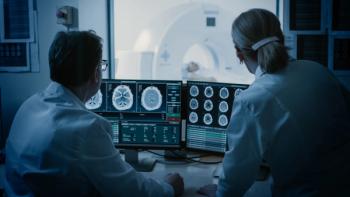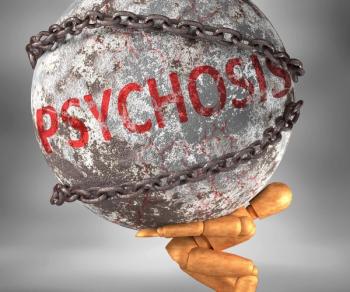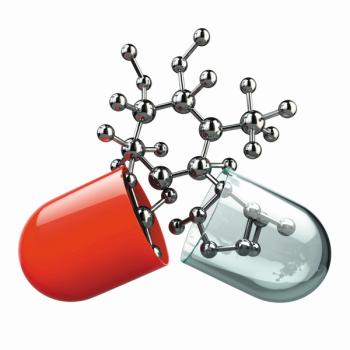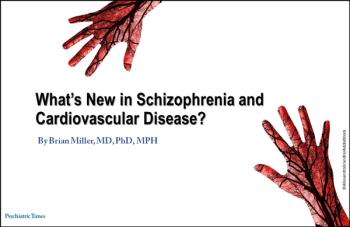
Does cognition predict outcomes in patients at clinical high-risk for psychosis?

Dr Miller is professor in the Department of Psychiatry and Health Behavior, Augusta University, Augusta, Georgia. He is on the Editorial Board and serves as the schizophrenia section chief for Psychiatric Times. The author reports that he receives research support from Augusta University, the National Institute of Mental Health, and the Stanley Medical Research Institute.

Does cognition predict outcomes in patients at clinical high-risk for psychosis?

The role of the oropharyngeal microbiome in schizophrenia and mania.

A nationwide cohort study sought to determine the clinical course of schizophrenia in women and men in order to improve diagnostic accuracy and design guidelines.

The role of neuroimaging is to rule out medically or surgically treatable causes of illness, such as new-onset psychosis.

Clinical considerations for evaluating treatment options for patients with insomnia and AUD versus patients with primary insomnia without substance use comorbidity.

There is evidence in both patients with psychotic disorders and the general population that cannabis use is associated with adverse effects of psychopathology and cognition.

New research on the prevalence of NMDA-receptor antibody encephalitis in first-episode and treatment-resistant psychosis

Because insomnia is a syndrome marked by chronic sleep onset and/or continuity problems associated with impaired daytime functioning, it is important that clinicians screen for sleep issues in their patients.

Treatment strategies for antipsychotic-induced hyperprolactinemia.

Psychomotor speed may be a relevant target in studies of the immune system and its impact on the brain in patients with schizophrenia.

Last year, the FDA approved esketamine, a rapidly acting adjunctive intranasal therapy for treatment-resistant depression. Now, researchers are exploring its efficacy in major depressive disorder.

There is inadequate information regarding optimal antipsychotic doses in the treatment of acute schizophrenia that balance efficacy and safety. This article helps you get it right.

New (and not-so-new) insights on antipsychotics across a range of different measures of treatment response.

Recently, the use of spectral-domain optical coherence tomography has contributed to our understanding of retinal abnormalities in schizophrenia.

Information on minimum and maximum effective doses has great clinical utility, and new findings provide guidance.

A study examining the connection between substance-induced psychosis and subsequent diagnosis of schizophrenia or schizoaffective disorder provides key implications for treatment.

New insights on the association between family history of type 2 diabetes and comorbid diabetes in patients with schizophrenia and other nonaffective psychoses.

Maternal viral infection during pregnancy is a risk factor for schizophrenia. But there has been relatively less research on the association between maternal bacterial infection during pregnancy and psychosis risk.

Research underscores the potential role of maternal bacterial infections during pregnancy in the etiology of psychosis.

Memory impairments have been shown to compromise quality of life in patients with schizophrenia. Findings from a recent study show that insulin resistance may be an underlying cause of memory loss in this population.

As research continues to point to a connection between the immune system and schizophrenia, a study of innate immunity in patients with first episode psychosis and schizophrenia provides further insights into the potential mechanisms of this link.

TMS for TRS? Researchers analyzed data to identify all randomized-controlled trials of rTMS versus sham treatment in patients with hard-to-treat forms of schizophrenia. Here’s what they found.

Negative symptoms, subsyndromal depressive symptoms, and functional impairment often persist in patients with first-episode schizophrenia.

Protein insolubility has been found to occur in a subset of patients with schizophrenia.

Current trials are investigating adjunctive monoclonal antibody immunotherapy in schizophrenia. Take the quiz and learn more.

Promising results from a phase 2 trial of olanzapine plus samidorphan in patients with schizophrenia.

Changes in social behavior on a mobile device may indicate relapse risk that could be assessed in the clinical setting.

5 questions to test your skills, based on recent findings in the literature.

In this quiz, learn which medical disorders patients with schizophrenia and comorbid TD are likely to contend with.

New research considers the effects of folic acid, vitamin B6, and vitamin B12 supplementation on symptom and neurocognitive outcomes in patients with FEP.